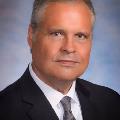Company
Press releases
Connected care = better care

Vice President & Chief Medical Officer
Arkansas Blue Cross and Blue Shield
I’m a country doctor at heart. For nearly three decades, it was my great privilege to serve as a family physician to people who live in the communities that make up the largely rural greater Arkadelphia area.
So when I learned Arkansas Blue Cross and Blue Shield was investing in creating a better informed and more connected healthcare delivery system in south Arkansas, I could not help but smile. I know firsthand how much it will mean to my colleagues who practice there … and to the patients who trust them with their care.
Things have changed a lot since I first began practicing, back in 1984. Rural Arkansas has changed a great deal – and so has healthcare.
Communities that were thriving 20-30 years ago have dwindled. As the economy has changed, many major employers, primarily in the manufacturing sector, have left the areas that once depended on them. The younger population has moved away, seeking opportunities elsewhere. This has left many communities with a remnant of older and poorer residents who have fewer resources (including transportation) and more health challenges.
Healthcare in rural Arkansas has changed, too. The hospitals that once served small towns and farming communities are struggling to survive. And while it’s true that healthcare is much better than it was back when state-of-the-art technology was an X-ray machine, it’s also true that it’s now much more financially challenging for rural hospitals to acquire and maintain the sophisticated equipment that is required to offer the high-tech services patients now have come to view as “basic” – even as the number of inpatients they serve continues to shrink. Some rural hospitals (which can be as dear to a community’s identity as a local church or school) have even closed their doors.
As for physicians, small-town Arkansas has always had a shortage. But now, the deficit is even more sharply felt. The same goes for nurses and support staff (technicians, etc.). With reduced talent pools, it’s getting harder for small-town hospitals to attract the highly trained and skilled healthcare professionals they need.
And, as always, the remoteness of rural areas still poses the same problems it did years ago. Distance has always been an obstacle to healthcare, where minutes matter and delays can spell disaster. Fortunately, however, we now we have tools that can help bridge the gaps of miles, time and knowledge.
That’s what systems like SHARE (the State Health Alliance for Records Exchange) can do. An Arkansas Blue Cross donation of $817,816 is making it possible for the 14 member hospitals of the Arkansas Rural Health Partnership, along with 108 affiliated clinics, to join and fully participate in SHARE. The money covers membership costs, system interfaces and technical support.
But how will this investment make the south Arkansas healthcare system better? That’s an easy one to answer: quick access to detailed health information from virtually anywhere in the region.
When it comes to healthcare, timely and accurate information is the blood supply, and this system is like a virtual transfusion that can be accessed at the touch of a button.
The ability for a physician to have a working knowledge of all aspects of a patient’s care “in the moment” is absolutely priceless. This allows physicians to be fully “up to speed” on a patient’s condition and treatment history the minute they walk in the exam room. It also avoids reliance on a patient’s memory or willingness to share the “whole story.” If a patient gets the facts 50% right, there’s a good chance my treatment plan will be 50% wrong.
Patients can take comfort in knowing information about their care travels with them whether they are at their family doctor’s office in Rison or when they see a cardiologist in Pine Bluff.
But SHARE also can help reduce the risk of duplication of services or procedures such as high tech imaging.
CT scans are a great example. If I can see you’ve recently had a CT scan in the next town down the road, I won’t order one. I’ll hop on the computer and look at the one you just had done. Getting a CT scan is roughly equal to having 200 chest X-rays. If I am armed with your history, I can still devise an effective treatment plan and protect you from unnecessary exposure to radiation at the same time.
This connectivity benefits individuals, but it also can help us identify community-specific or regional health challenges and opportunities by analyzing the rich, centralized store of data it creates. We can use these insights to develop strategies to improve the health and quality of life of local communities or even the entire region.
Investments like this one are absolutely essential to the future sustainability of the healthcare delivery system in the more rural and medically underserved areas of our state. But this is only the beginning.
We must add to it a greater use of remotely delivered assessment and care through technologies such as telemedicine.
And we must be on the lookout for more ways technology can help future generations of country doctors deliver the first-rate, personally tailored care their patients deserve.
Printed in the Arkansas Democrat-Gazette February 14, 2020.